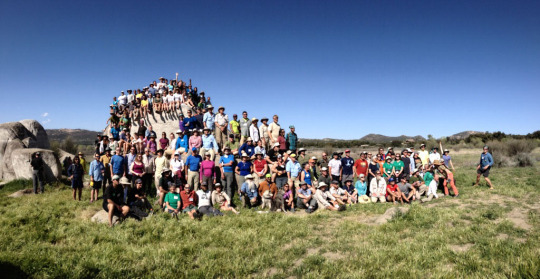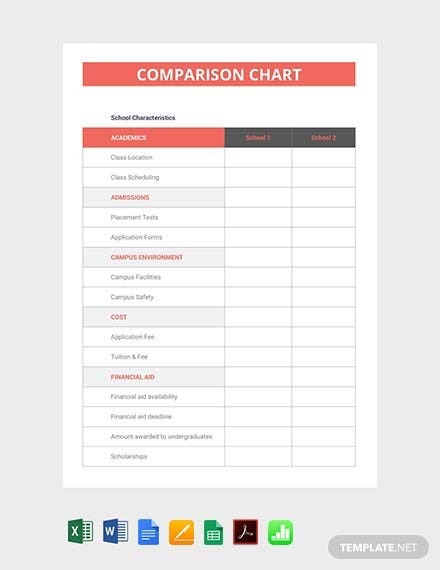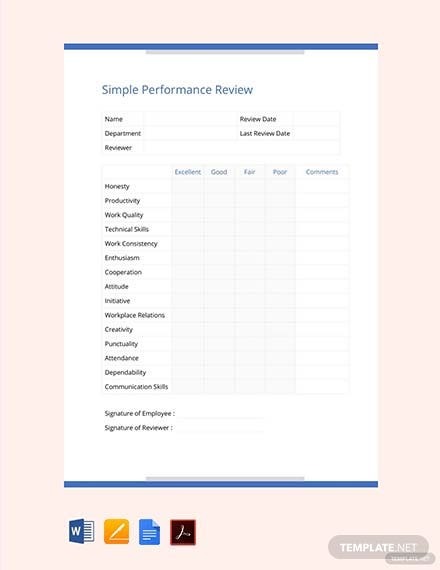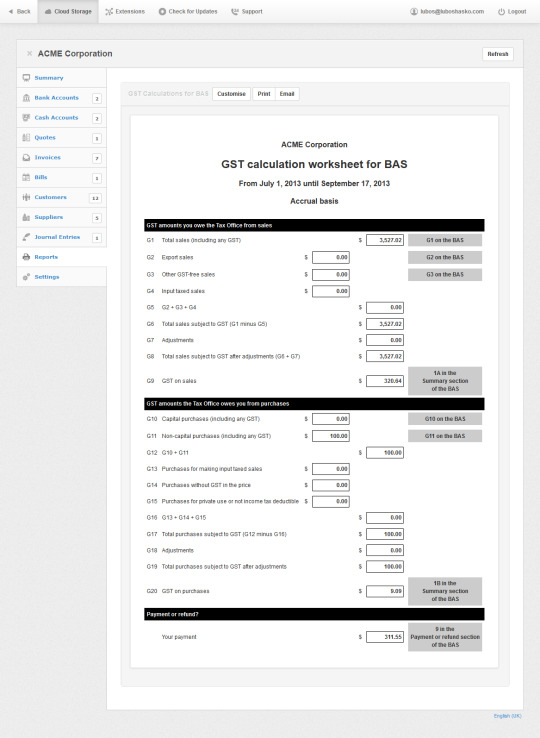#there’s more to this but that would pass the 10 image limit on mobile
Text










#fgo#shitpost#bb#salter#leonardo da vinci#jalter#kiara sessyoin#baobhan sith#castoria#merlin#artoria pendragon#koyanskaya#dobrynya nikitich#gray#there’s more to this but that would pass the 10 image limit on mobile#and I don’t feel like moving the images to my Mac so be patient#chaldea twitter adventures
1K notes
·
View notes
Photo

Ten years.
The first ever Gruvia Week was held in 2013. It is now 2023. Meaning, this is the 11th edition/Gruvia Week... but 10 years have passed since the creation of this blog and beloved event that’s been held on the exact same dates since the beginning (April 1st - April 7th). That’s right, the event date has never changed, never held early, nor late. To keep it this consistent and for so long is truly an accomplishment.
Thank you to all the wonderful fans that have kept this event alive for so long. It has been my pleasure to host this celebration for the last 10 years, and it’s because of you that I do so. All the dedicated Gruvia lovers deserve this. The fandom has changed a lot as time went on. People come and go. However, most notably, we have grown in more ways than one. Likewise, Gray and Juvia have gone through a tremendous amount of development in the last decade. They have confirmed mutual romantic love and a son that we have yet to meet in earthland, but still very much canon in the manga and drawn by the author (Hiro Mashima) of his own accord on multiple occasions. Despite this, we are still waiting for the day they “officially” get together. The setup and foreshadowing is there... He wants it, so Gray, confess to Juvia soon!
In the meantime, we celebrate the ship once again. Here are the official Gruvia Week 2023 prompts displayed in the image above. Just like in previous years these prompts are not complicated, but they are broad and meant to make you think. Be creative. Interpret them however you see fit. If you don’t know what a word means, look it up. Specific and basic prompts would result in different versions/entries of the same thing. That’s why Gruvia Week is so successful every year; imagination. Prompts for this event are always different every year. No repeats! See: Previous Gruvia Week editions
Those who are new to the week, unfamiliar, or would like to simply rehash, please click here to learn how to participate. Also be sure to follow the rules and guidelines. Feel free to ask questions, however please check this blog’s previous posts before submitting them. It’s possible your question could have already been answered.
Reminder: All pieces must be new. Old works will not be reblogged/included in the week. Be sure to specify the day/prompt used in your post. If you don’t have a tumblr, you can still participate. Post your work on any social media platform for that target audience. Participate anywhere; the more the merrier! However, if you’d like your work to be posted/featured here as well, be sure to submit it to this blog. Or submit the link to it (if posted on another platform such as twitter, instagram, wattpad, ao3, etc).
Reminders:
Tag your work with #gruvia week (with the space) within the first five tags.
Avoid using links in your post, as there is a chance it will not show up in the tags. Try using only five tags and no links if your post does not appear. If you must use a link, make sure it shows in the tags.
If your work contains an image or gif, make sure it’s within tumblr’s photo dimensions and size limits. Sometimes big images cause posts to not appear in tags.
It is YOUR responsibility to make sure your post shows up in the mobile and/or pc tags, so be sure to check if it does.
Gruvia Week will be held from April 1st - April 7th as always. Get ready and get creative!
Graphic/art by the wonderful and talented @goodnightlover. Thank you! ♡
#gruvia#gruvia week#gray fullbuster#juvia lockser#fairy tail#gruvia week 2023#fairy tail 100 years quest
448 notes
·
View notes
Text
Today's Hero is Ezzeddin Lulu, the Smile Maker.

"As a student studying to become a doctor, I made a decision based on the way my father had raised me to always give back to my religion and homeland. I chose to volunteer at Al Shifa Hospital during the war, recognizing that the level of catastrophe exceeded the capacity of the medical staff and hospital alone, leaving my own family behind."
Before the read-more I'd like to show his most recent post as of writing this (29.03.23.) Unfortunately his mother has also been murdered. Ezz was incredibly proud of his mother and so was she in him. She memorised the entirety of the Qur'an and knew it to her dying breath. Despite the horror of losing her family she remained strong both in love and in faith.



Here is a go-fund-me created by Ezzeddin. Even if you can't donate please share it and read his story in his words.
During the genocide, artist and medical student Ezzeddin Lulu (nicknamed the smile maker) has been trapped in al-Shifa hospital in the North of Gaza more than once. He has worked with minimal and no food for days on end in a hospital surrounded by tanks and snipers. He's worked with patients not knowing if he or they will even survive the coming days. He's worked knowing his family could be dead. He's worked knowing the only family he has left is his injured mother. He's worked after standing on the rubble of his home knowing his family is trapped under and there's nothing he can do. He's even worked after the murder of his mother.
He's worked on patients without anaesthetic. He's described to us the harrowing screams of children. He's shown injuries that nobody has really seen until now because the weapons used by the IOF and their allies are horrific and are designed to cause as much pain, death and destruction as possible.
All this as a medical student. Ezzeddin has yet to graduate.
Ezz is also an artist who has been dubbed the "smile-maker". He draws people he sees when he's out and about and whenever he shows them the result they smile. He has also recreated horrifying images and changed them into something good. For example there's a famous picture of a father being dragged away from his daughter by soldiers. Ezzeddin has redrawn this in a scene where the father is hugging his daughter.


Ezzeddin Lulu is a hero. He demonstrates the good in humanity. Despite everything he still works for his patients and he still posts to show the world how the IOF and their supporters target civilians and medical staff. He also posts about his family and colleagues, telling us they've passed away or what injuries they've sustained. Because of Ezz's posts I'm aware that Israeli snipers target the healing hands of doctors.
How is his heroism rewarded?
Trapped in al-Shifa not knowing who (patients, coworkers, family, himself) will live or die and if he'll have to watch. This happened twice because despite everything he is still determined to help people and so he went back to work.
Finally I would like to close this first post by sharing pictures of his martyred family and a little bit about them because they also deserve to be remembered.
Everyone who's been murdered was something to somebody. A mother, a grandpa, a niece, a son, a cousin, an aunt, a friend, a lover. Sometimes people themselves become homes so what happens when that home is ripped from you? Unfortunately there is a 10 picture limit on mobile and I felt it was important to share multiple images of the same people to make sure they're more than just numbers to us. I intend make another post about him in the future so if I do I'll include more of his martyred loved ones to honour them.
Note: Forgive me if there are any errors. I don't speak Arabic so I'm relying on translation apps which means when it comes to peoples names I might make a mistake. If corrected I will fix it ASAP. These people deserved to be remembered with their real names.
Below is Ezzeddin's father: Mister Samir Fahmi Lulu (Abu Hazifa). While Ezz was trapped in al-Shifa he heard news of his fathers martyrdom but there was nothing he could do because the occupation was surrounding the hospital so Ezzeddin continued to work.
Samir Fahim Lulu cared deeply about his son and what his son was going to do. His father always wanted to see his son on his graduation day in his robes and watch him swear his oath as a doctor but the IOF robbed them both of that. Ezzeddin has described his father as his backbone and is the reason he chose to volunteer at al-Shifa during the genocide.


Below is a family within a family. We have Hazifa Samir Lulu who was the oldest son and brother, a father himself, an engineer.
In the middle is their daughter: Reem Hazifa Lulu. Reem was also a niece, granddaughter and a great granddaughter.
Finally there's Rana Maher Al-Ghassin. She was an engineer, a wife, a daughter, a mother. She was pregnant with a baby that would have been so incredibly loved had Rana not been murdered. They were overjoyed when they announced the pregnancy a week before the war.


I wonder if Reem would have become an engineer or if she would have chosen something else. I wonder if Ezzeddin and Hazifa's mother was right about her dream of Rana having twins. I wonder if Reem would have had another Frozen themed birthday or if she would have picked something else. How cruel of a world is it that they'll never know the happiness they deserved?
#ezzeddin lulu#al shifa hospital#palestine#doctors of gaza#free palestine#ezz lulu#free gaza#north gaza#ezz.lulu#cymru am palestina#palestinian resilience#Palestinian doctors
7 notes
·
View notes
Text
GameFAQs ASCII art: Some history
Back in the before times, when the only way to be social online was through a combination of BBS, IRC, and published message boards, thousands of users gathered on a videogame walkthrough site appropriately titled GameFAQs. While the hook of the site were and are its titular FAQs, there was also a large variety of message boards specific to every game out there, in addition to boards without a general topic, such as Current Events or Random Insanity. As the years passed and the rest of the Internet grew and modernized and developed new ways to socialize, GameFAQs established a reputation as being very conservative in its design and function. For example, it was only in 2019 that image embedding was added to the boards, literal decades after they first opened. During those years where images not only required a direct link, but their load times were reliant on a user's dial-up connection, the userbase developed an affinity for ASCII art.
Named for the characters used in the American Standard Code for Information Interchange, ASCII art began to develop at the tail end of the 20th century, its heyday tied to BBS forums and Usenet groups. With these proto-social media falling into obscurity, so too did ASCII art. But the image restrictions of GameFAQs on both FAQs and message boards created a fork for ASCII art (henceforth simply referred to as ASCII) that enabled the hobby to enjoy an extended Renaissance. From there, another fork formed between the FAQs and the boards. That is to say, the ASCII you see on this blog was not posted on the titular FAQs, but the message boards they accompanied. While FAQ art only used the fixed width font Courier (fixed meaning it could be posted anywhere that uses Courier and it would maintain its shape), message board art used the variable width font Arial, size 10. Interestingly, AOL chatrooms used this same font and size in their ASCII (colloquially known as Macro art), which may be how GameFAQs users picked it up so quickly.
Patamon was a user of the boards, and one of the pioneers of the board-specific ASCII that became popular across the site and even other sites. Working within the formatting limitations of the boards--the aforementioned Arial 10 as well as no double single spacing or full spacing, which meant empty space had to be filled with periods/ellipses--he and others created ASCII that could be posted in any topic/thread. His most famous work, which you may have seen at some point, Mario riding Yoshi, later nicknamed LUEshi due to its temporary domination of the board Life, the Universe, and Everything.

[Image Description: A screenshot of 27 lines of text containing a variety of text characters. The characters are arranged to form an image of Mario riding Yoshi. Mario and Yoshi are looking at each other and smiling. End I.D.]
Or such was the case before it became TOO popular and had to be relegated to specifically named "***ASCII***" topics to avoid being moderated for "disruptive posting." At the same time, new art was created and shared on the message board for the game Alphabet Zoo for the Commodore 64. This art would make its way to the more popular boards, often edited for additional humor such as the ever unexpected Jinjo, sombreros, top hats, face swapping, and more. All this occurred in the early 2000s. Unfortunately, you won't find many of these posts due to board archiving not being introduced until 2008 (there's that GameFAQs antique aesthetic again.) There used to be an exhaustive archive of GameFAQs ASCII, but much of it is also lost to time.
By the time I even knew about ASCII art around 2007 or so, the party was over. Patamon had long left, as did many of the more prolific artists. The ones who hadn't left simply didn't have the desire to keep up with it, what with image sharing becoming easier. Perhaps most importantly, the format of the boards began to discourage it in order to favor mobile displays. In 2014, an update banned strings over 80 characters, which was the final nail in the coffin. My decision to keep making ASCII in the Arial 10 style is purely traditional; there's no longer a popular site to post these variable width ASCII unless in screenshot form. I think the Japanese Discord I used to lurk said it best:

[Image Description: A screenshot of a Google Translate translation made up of two columns of text. The text on the left is in Japanese and reads, "Komyuniti ga shimetsu shita nochi mo ikinokotte AA o tsukutte kita seikimatsu no bakemono-san mitaidesu o." The text on the right is in English and reads, "It's like the end-of-the-century monster who survived the death of the community and made AA." End I.D.]
ASCII at large isn't dead though. Traditional fixed-width ASCII is still regularly made by small but dedicated users on various platforms, often tagged as #ASCII or #ASCIIart. A fellow GameFAQs user who made ASCII for the FAQs has come out of hiding and can now be found on Twitter. Sixteen Colors is a regularly updated art gallery for ANSI/ASCII/other antique Internet art. "Braille" ASCII has taken off due to its fixed-width and small size being ideal for Twitch memes. There is also the Japanese cousin of ASCII, Shift_JIS (SJIS) art/"AA", which still boasts a large output on dedicated image boards like 2chan. You can usually find these under the tag #アスキーアート, or at the sites Yaruyomi, AA Hub, and UTF8 Art.
Finally, this is a rough retelling of events from someone who was absent for most of them, and there are probably multiple things that need correcting. Also I have no idea how to make image descriptions other than what I've read other users here say, and I have even less of an idea of how to convey the idea of ASCII art via a description. Corrections on these things would be appreciated most of all.
31 notes
·
View notes
Link
Full article:
By Drew Harwell and Eva Dou
Dec. 8, 2020 at 7:30 a.m. PST
The Chinese tech giant Huawei has tested facial recognition software that could send automated “Uighur alarms” to government authorities when its camera systems identify members of the oppressed minority group, according to an internal document that provides further details about China’s artificial-intelligence surveillance regime.
A document signed by Huawei representatives — discovered by the research organization IPVM and shared exclusively with The Washington Post — shows that the telecommunications firm worked in 2018 with the facial recognition start-up Megvii to test an artificial-intelligence camera system that could scan faces in a crowd and estimate each person’s age, sex and ethnicity.
If the system detected the face of a member of the mostly Muslim minority group, the test report said, it could trigger a “Uighur alarm” — potentially flagging them for police in China, where members of the group have been detained en masse as part of a brutal government crackdown. The document, which was found on Huawei’s website, was removed shortly after The Post and IPVM asked the companies for comment.
Such technology has in recent years gained an expanding role among police departments in China, human rights activists say. But the document sheds new light on how Huawei, the world’s biggest maker of telecommunications equipment, has also contributed to its development, providing the servers, cameras, cloud-computing infrastructure and other tools undergirding the systems’ technological might.
John Honovich, the founder of IPVM, a Pennsylvania-based company that reviews and investigates video-surveillance equipment, said the document showed how “terrifying” and “totally normalized” such discriminatory technology has become.
“This is not one isolated company. This is systematic,” Honovich said. “A lot of thought went into making sure this ‘Uighur alarm’ works.”
Huawei and Megvii have announced three surveillance systems using both companies’ technology in the past couple years. The Post could not immediately confirm if the system with the “Uighur alarm” tested in 2018 was one of the three currently for sale.
Both companies have acknowledged the document is real. Shortly after this story published Tuesday morning, Huawei spokesman Glenn Schloss said the report “is simply a test and it has not seen real-world application. Huawei only supplies general-purpose products for this kind of testing. We do not provide custom algorithms or applications.”
Also after publication, a Megvii spokesman said the company’s systems are not designed to target or label ethnic groups.
Chinese officials have said such systems reflect the country’s technological advancement, and that their expanded use can help government responders and keep people safe. But to international rights advocates, they are a sign of China’s dream of social control — a way to identify unfavorable members of society and squash public dissent. China’s foreign ministry did not immediately respond to requests for comment.
First she survived a Uighur internment camp. Then she made it out of China.
Artificial-intelligence researchers and human rights advocates said they worry the technology’s development and normalization could lead to its spread around the world, as government authorities elsewhere push for a fast and automated way to detect members of ethnic groups they’ve deemed undesirable or a danger to their political control.
Maya Wang, a China senior researcher at the advocacy group Human Rights Watch, said the country has increasingly used AI-assisted surveillance to monitor the general public and oppress minorities, protesters and others deemed threats to the state.
“China’s surveillance ambition goes way, way, way beyond minority persecution,” Wang said, but “the persecution of minorities is obviously not exclusive to China. … And these systems would lend themselves quite well to countries that want to criminalize minorities.”
Trained on immense numbers of facial photos, the systems can begin to detect certain patterns that might differentiate, for instance, the faces of Uighur minorities from those of the Han majority in China. In one 2018 paper, “Facial feature discovery for ethnicity recognition,” AI researchers in China designed algorithms that could distinguish between the “facial landmarks” of Uighur, Korean and Tibetan faces.
But the software has sparked major ethical debates among AI researchers who say it could assist in discrimination, profiling or punishment. They argue also that the system is bound to return inaccurate results, because its performance would vary widely based on lighting, image quality and other factors — and because the diversity of people’s ethnicities and backgrounds is not so cleanly broken down into simple groupings.
Such ethnicity-detection software is not available in the United States. But algorithms that can analyze a person’s facial features or eye movements are increasingly popular in job-interview software and anti-cheating monitoring systems.
Clare Garvie, a senior associate at Georgetown Law’s Center on Privacy and Technology who has studied facial recognition software, said the “Uighur alarm” software represents a dangerous step toward automating ethnic discrimination at a devastating scale.
“There are certain tools that quite simply have no positive application and plenty of negative applications, and an ethnic-classification tool is one of those,” Garvie said. “Name a human rights norm, and this is probably violative of that.”
Huawei and Megvii are two of China’s most prominent tech trailblazers, and officials have cast them as leaders of a national drive to reach the cutting edge of AI development. But the multibillion-dollar companies have also faced blowback from U.S. authorities, who argue they represent a security threat to the United States or have contributed to China’s brutal regime of ethnic oppression.
Eight Chinese companies, including Megvii, were hit with sanctions by the U.S. Commerce Department last year for their involvement in “human rights violations and abuses in the implementation of China’s campaign of repression, mass arbitrary detention, and high-technology surveillance” against Uighurs and other Muslim minority groups.
The U.S. government has also issued sanctions against Huawei, banning the export of U.S. technology to the company and lobbying other countries to exclude its systems from their telecommunications networks.
Huawei, a hardware behemoth with equipment and services used in more than 170 countries, has surpassed Apple to become the world’s second-biggest maker of smartphones and is pushing to lead an international rollout of new 5G mobile networks that could reshape the Internet.
And Megvii, the Beijing-based developer of the Face Plus Plus system and one of the world’s most highly valued facial recognition start-ups, said in a public-offering prospectus last year that its “city [Internet of Things] solutions,” which include camera systems, sensors and software that government agencies can use to monitor the public, covered 112 cities across China as of last June.
The “Uighur alarm” document obtained by the researchers, called an “interoperability test report,” offers technical information on how authorities can align the Huawei-Megvii systems with other software tools for seamless public surveillance.
The system tested how a mix of Megvii’s facial recognition software and Huawei’s cameras, servers, networking equipment, cloud-computing platform and other hardware and software worked on dozens of “basic functions,” including its support of “recognition based on age, sex, ethnicity and angle of facial images,” the report states. It passed those tests, as well as another in which it was tested for its ability to support offline “Uighur alarms.”
The test report also said the system was able to take real-time snapshots of pedestrians, analyze video files and replay the 10 seconds of footage before and after any Uighur face is detected.
The document did not provide information on where or how often the system is used. But similar systems are used by police departments across China, according to official documents reviewed last year by the New York Times, which found one city system that had scanned for Uighur faces half a million times in a single month.
Jonathan Frankle, a deep-learning researcher at the Massachusetts Institute of Technology’s Computer Science and Artificial Intelligence Lab, said such systems are clearly becoming a priority among developers willing to capitalize on the technical ability to classify people by ethnicity or race. The flood of facial-image data from public crowds, he added, could be used to further develop the systems’ precision and processing power.
“People don't go to the trouble of building expensive systems like this for nothing,” Frankle said. “These aren't people burning money for fun. If they did this, they did it for a very specific reason in mind. And that reason is very clear.”
It’s less certain whether ethnicity-detecting software could ever take off outside the borders of a surveillance state. In the United States and other Western-style democracies, the systems could run up against long-established laws limiting government searches and mandating equal protection under the law.
Police and federal authorities in the United States have shown increasing interest in facial recognition software as an investigative tool, but the systems have sparked a fierce public backlash over their potential bias and inaccuracies, and some cities and police forces have opted to ban the technology outright.
Such technologies could, however, find a market among international regimes somewhere in the balance between Chinese and American influence. In Uganda, Huawei facial recognition cameras have already been used by police and government officials to surveil protesters and political opponents.
“If you’re willing to model your government and run your country in that way,” Frankle said, “why wouldn’t you use the best technology available to exert control over your citizens?”
Discrimination against Uighurs has long been prevalent in the majority-Han Chinese population. In the Xinjiang region of northwestern China, authorities have cited sporadic acts of terrorism as justification for a harsh crackdown starting in 2015 that has drawn condemnation from the United States and other Western nations. Scholars estimate more than 1 million Uighurs have been detained in reeducation camps, with some claims of torture.
U.S. national security adviser Robert O’Brien called the repressive treatment of minority groups in Xinjiang “something close to” genocide, in an online event hosted by the Aspen Institute in October.
Under international pressure, Xinjiang authorities announced last December that all reeducation “students” had graduated, though some Uighurs have since reported that they were forced to agree to work in factories or risk a return to detention. Xinjiang authorities say all residents work of their own free will.
The U.S. government has banned the import of certain products from China on the basis that they could have been made by forced labor in Xinjiang.
One of the Huawei-Megvii systems offered for sale after the “Uighur alarm” test, in June 2019, is advertised as saving local governments digital storage space by saving images in a single place.
Two other systems, said to use Megvii’s surveillance software and Huawei’s Atlas AI computing platform, were announced for sale in September. Both were described as “localization” of the products using Huawei chips and listed for sale “only by invitation.” Marketing materials for one of those systems say it was used by authorities in China’s southern Guizhou province to catch a criminal.

Some things people outside of China can do to help:
Folks in the US: contact your house representative and your state senators. Demand that they support the Uyghur Human Rights Policy Act of 2019 (H.R. 649), and that they take further action against the genocide in Xinjiang. You can even link this article or copy and paste paragraphs (with citation) in your email if writing is intimidating for you.
Folks from most countries can write to your ambassador in China.
Avoid buying from companies that use Uighur slave labor.
Read the Australian Strategic Policy Institute’s analysis of slave labor and re-education camps in Xinjiang.
Boycott the Beijing 2022 Olympics.
22 notes
·
View notes
Text
Crowds, Fires, and Smart Phones
We have mentioned that we are in the process of editing a 10th anniversary edition of The Pacific Crest Trailside Readers through the Mountaineers Books. This task has given Howard and me and excellent opportunity to reflect on some of the changes that have occurred since the original volumes were published. And it has challenged us to consider the future of the PCT.
In this post, I want to highlight the major changes impacting the PCT over the past decade and into the future. If you feel that I have missed something, overstated or understated the impact of a change, please send us a comment ([email protected]). In the next post, I will write some about what lies ahead for the PCT.
Three (#1 and #2 are part of the same ‘change’) big inter-related changes that tend to inform our vision of the future for the PCT:
1) Number of People Using the Trail. In 2019, the PCTA issued nearly 8,000 long-distance PCT permits, a four-fold increase from 2013. This increase is also reflected in the number of people who report finishing the PCT. In 2011, when the Readers were published, there were 158 recorded finishers. In 2019, that number was 963 (a six-fold increase). In an effort to spread out the impact on the trail, efforts have been made to limit NOBO hikers beginning at Campo to 50 daily. The ADZPCTKO has been discontinued. Trail angels, who have long been a fixture of the trail experience, have retired. It is difficult to imagine operations on the scale of Hiker Heaven and Casa de Luna and Scout and Frodo re-emerging. And, of course, the number of hikers changes the trail experience. There are reasons to be concerned about the impact on fragile alpine and desert ecosystems, the overuse of popular campsites, and increasing issue of human waste disposal.

2) Who is on the Trail. The annual PCT survey reported in halfwayanywhere.com shows a change in the composition of long-distance hikers on the PCT. The increase in women and more international hikers is most apparent. There remains a concerning underrepresentation of BIPOC hikers. Based on a more informal assessment, there are many more hikers that begin walking the trail with less outdoors experience
3) Technology. Nearly everything that we put in our backpacks has been affected by technology. There are new strong, lightweight fabrics used in clothing, tents, and the packs themselves. There are smart phones that serve as cameras, maps, and mobile entertainment consoles empowered by apps (like Guthook) and powered by uber-efficient solar chargers. Water purification technology, stoves, headlamps . . . Sadly, one of the unintended consequences of all of this is that outfitting oneself can be very expensive. Potentially hiking the PCT could become a class issue.

4) Climate Change. The fire season has been starting earlier and ending later, the fires have been immense on an unprecedented scale, and the droughts more severe. Over the past decade, it has increasingly been a rare year where hikers are not re-routed around a fire closure. I often think about two images when I think about the trail and climate change. I walked on the PCT through the beautiful forests along the Transverse Range about five months before the Station Fire decimated the landscape all of the way to Messenger Flats. I returned nine years later and walked the same stretch. It was clear that these magnificent forests were returning as permanent chaparral. There is a similar pattern happening west of Big Bear and east of Deep Creek.
The second image is of that of the forests south of Cottonwood Pass all of the way to Walker Pass. The severe drought of the past decade has weakened so many trees that pests and disease have particularly ravaged the forest in that region. It was challenging to find a completely healthy tree. Instead, it is a forest vulnerable to fire.
How is your take on this list different than mine? I would love to hear from you.
Rees Hughes
5 notes
·
View notes
Text
Business Accounting Software For Mac Free

Simple Bookkeeping Software For Mac
Free Business Accounting Software For Mac
Free Accounting App For Mac
Download Free Small Business Accounting Software For Mac
Best Accounting Software For Mac
Home Accounting Software For Mac
Business Accounting Software For Mac Free Download
Just because you’re a Mac person doesn’t mean you have to settle for less with your accounting software. Check out these 6 great options.
A few years ago, we published an article on the best accounting software options for Mac users. This is an update of that article, but here’s the thing: There’s no such thing as “accounting software for Mac” anymore.

Sure, there’s plenty of accounting software that you can use on your MacBook, MacBook Air, MacBook Pro, iMac, etc. But while there used to be Mac software and PC software, it’s now virtually all the same with the ever-increasing expansion of cloud-based software that works seamlessly in any browser.
In other words, you’d have a much harder time finding accounting software that doesn’t work on your Mac than a program that works only on Macs. In fact, with more than 100 million active Mac users, if you found an accounting program that somehow wasn’t compatible with Mac, that alone would be cause for alarm.

Cloud software is here to stay, and the market is only getting bigger. Gartner predicts that by 2022, 28% of enterprise IT spending will have shifted to cloud applications, up from 19% in 2018. (Full report available to Gartner clients.)
Less Accounting: Features and Functions: Another very easy to use free accounting software for Mac users. It is specifically meant for accountants or freelancers who are new to their work and are not much aware about accounting. Wave is a free, Canadian-made online software suite for managing small business finances. The free tools include accounting, invoicing, receipt scanning and personal finance, with features like unlimited bank connections, estimates/quotes, recurring invoices and accountant-approved (double-entry) reports. The Best Free Business Software app downloads for Mac: Microsoft Office 2011 Microsoft Office 2016 Preview Google Workspace Microsoft Excel 2016 Micro. MARG ERP 9+ Accounting Software. MARG ERP 9+ is widely acclaimed accounting software for. Osfinancials accounting and business processing software osFinancials is a free accounting package, easy to install Stock control and point of sales integrated with good support and plugins. Import from osCommerce, virtue-mart magento zenchart etc. Full reportdesigner reportman and all reports are made in reportman so can be adjusted to your needs.
6 user-friendly accounting software options for Mac
Rather than giving you a generic list of accounting software that works on Macs (which would basically just be our accounting software directory), I decided to determine which top factors users have for choosing Mac over PC and then find accounting software that best suits those users.
Macs are typically high-end machines with consistently strong reviews from users, so I included only accounting tools with an overall rating of 4.5/5 stars or higher in our directory (based on verified user ratings) and with at least 100 reviews.
In general, Macs are considered easier to use than PCs, so I’m including only products with an ease-of-use rating on our site of 4.5/5 or higher.
Finally, I included only products with a native iOS app with a user rating of 4/5 or better on the App Store, since Mac users typically use iPhones and iPads as well as their desktop or laptop computers.
With those factors in mind, here’s what I found, listed in order of rating and reviews from highest to lowest:
Jump to:
QuickBooks
FreshBooks
Accounting by Wave
Zoho Books
FreeAgent
Kashoo
1. QuickBooks
User rating: 4.5/5.0
Ease-of-use rating: 4.5/5.0
Reviews:14,700+
It’s no surprise that the big name in accounting software is available on Mac operating systems. QuickBooks has even had a desktop-only (not cloud-based) option available for Macs since at least the mid-1990s, making the company something of a pioneer for cross-platform functionality.
Now, any of QuickBooks’ cloud-based offerings will work fine on your Apple device, and Intuit even still offers a desktop version for Mac. The desktop version for Mac even has a few features designed specifically for Mac users:
QuickBooks for Mac 2020 takes advantage of the Mojave OS Dark Mode.
You can upload text searchable images with the iPhone scanner.
Documents can be automatically shared through iCloud.
Pros
Cons
QuickBooks is available on virtually every device, so whether your team has Macs, PCs, or smartphones, you know that everyone can use it together.QuickBooks has very attractive entry-level pricing, but it doubles after three months.With hundreds of integrations, QuickBooks is highly customizable.QuickBooks is an enormous company, and some reviewers find that the customer service isn’t as hands-on as they’d like.
How much does QuickBooks cost?
QuickBooks Online starts at $25/month. QuickBooks Desktop for Mac is a one-time payment of $299.
What about the iOS app?
The QuickBooks iOS app has a 4.7/5 rating on more than 100,000 reviews. It allows users to create invoices, manage expenses, and view reports.
The QuickBooks Online dashboard (Source)

2. FreshBooks
User rating: 4.5/5.0
Ease-of-use rating: 4.5/5.0
Reviews:3,000+
Designed specifically for small businesses and the self-employed, Toronto-based FreshBooks has been around for more than 15 years. FreshBooks also has Mac users in mind. They say that their easy-to-use accounting software works on any device—desktop, mobile, or tablet—and “plays nicely” with Mac.
Pros
Cons
Users rave over FreshBooks’ customer support, and the company stakes their reputation on it.If your company is rapidly growing—for example, if you plan on going public—you may quickly outgrow FreshBooks.Even though it’s targeted at smaller companies, FreshBooks has all the important accounting features you would need, so it can handle much more than lemonade stands.Freshbooks does a great job of keeping your books clean, but if you love forecasting and crunching numbers, it’s a little skimpy on the reporting side.
How much does FreshBooks cost?
FreshBooks starts at $15 per month for five clients and goes up to $50 per month for 500 clients. *At the time of writing, FreshBooks has a fall sale of 60% off for six months on all plans.
What about the iOS app?
The FreshBooks app has a 4.8/5 rating on almost 8,000 reviews. It allows you to run invoices, record expenses, track time, and accept payments, all while you’re away from your computer.
The Invoices dashboard in FreshBooks (Source)
Simple Bookkeeping Software For Mac
3. Accounting by Wave
User rating: 4.5/5.0
Ease-of-use rating: 4.5/5.0
Reviews:800+
Accounting by Wave is one of the youngest tools on this list, having launched out of Toronto in 2010 before being acquired by H&R Block earlier this year. Its biggest differentiator is that it has a completely free version, as long as you don’t need to use it to accept payments or run payroll (those are optional, paid features).
So what makes Wave an attractive option specifically for Mac users? As mentioned, it’s free, so it’ll help you save for the next iPhone or MacBook upgrade. It also scores high for ease of use, making it fit in nicely with the intuitive Mac ecosystem.
Pros
Cons
It’s free without limitations on users or transactions as long as you don’t need to accept payments or run payroll.Wave is missing an audit trail feature, leaving it vulnerable to fraudulent employees.Wave offers above-average reporting features for a free tool.The free version offers only email support, and even if you pay for payments or payroll you still only get access to chat support (no phone support).
How much does Wave cost?
Wave is free. Payments are 2.9% + 30 cents per credit transaction, or 1% per bank transaction. Payroll starts at $20 per month plus $4 per employee.
What about the iOS app?
Invoice by Wave passes the user review test, clocking in at 4.6/5 with almost 2,000 reviews. It doesn’t completely replace the web version of Wave, but it does allow you to keep an eye on your business finances wherever you are. The biggest complaints that users have seem to be related to customer service, which is not unique to the app.
Recent transactions in Accounting by Wave (Source)
4. Zoho Books
User rating: 4.5/5.0
Ease-of-use rating: 4.5/5.0
Reviews:380+
If you’re looking for the peace of mind of an established, international company offering Mac-friendly accounting software and you’re trying to avoid QuickBooks for whatever reason, Zoho Books might be for you. Zoho has been releasing business software since 1996, and Zoho Books is specifically tailored for Mac users, as it is designed to work with iMessage, Apple Maps, Siri, and 3D Touch. It even has an app for the Apple Watch.
Pros
Cons
Zoho Books is one of the most user-friendly options out there. In fact, it placed fourth—better than any other option on this list—on our Top 20 Most User-Friendly accounting software report earlier this year.Zoho Books offers integrated payroll in California and Texas for now, but if you’re in any other state you’ll have to use a separate payroll app.Starting at $9 per month, Zoho Books is one of the best values in accounting software this side of Wave, which is free. And unlike Wave, Zoho has almost universally praised customer service.Zoho Books is optimized for use with Zoho’s customer relationship management system, Zoho CRM, so if you’re already using a different CRM, it won’t work as efficiently.
How much does Zoho Books cost?
Zoho Books starts at $9 per month or $90 per year for 50 contacts and two users and goes up to $29 per month or $290 per year for unlimited contacts, 10 users, and more features.
What about the iOS app?
As mentioned above, the Zoho Books iOS app takes full advantage of iOS-specific features such as messaging and voice assistant, and users love it, giving it a 4.7/5 rating on almost 150 reviews. While some accounting software apps have minimal features, allowing you to basically just check balances and view transactions, Zoho Books allows you to create and send invoices, manage expenses, track time, view reports, and share numbers with your accountant.
Managing invoices in Zoho Books (Source)
5. FreeAgent
User rating: 4.5/5.0
Ease-of-use rating: 4.5/5.0
Reviews:110+

FreeAgent accounting software is based in the U.K. and originally designed for British businesses, but they also have versions customized for U.S. and global businesses, and the software has full multicurrency support. Like any good cloud-based software, FreeAgent works like a breeze on the Mac platform, and its iOS app is a fan favorite.
Pros
Cons
Users are quite pleased with FreeAgent’s recurring invoice and receipt scanning features, which help take repetitive tasks out of small business accounting.FreeAgent is designed for small businesses, so if you’re growing fast, you could outgrow it relatively quickly.Users also have good things to say about FreeAgent’s customer service, which is available by email or phone.FreeAgent is 50% off for your first six months, but after that it’s $24 per month, which is a little high compared to other options on this list.
How much does FreeAgent cost?
FreeAgent has a flat-rate of $12 per month for everything (unlimited users and clients) for the first six months, then goes up to $24 per month after that.
What about the iOS app?
FreeAgent’s iOS app has an average rating of 4.7/5 on 20 reviews. It allows you to view your accounts, manage expenses by snapping pictures of receipts, create and send invoices, and track time.
The main dashboard in FreeAgent accounting for iPad (Source)
6. Kashoo
User rating: 4.5/5.0
Ease-of-use rating: 4.5/5.0
Reviews:110+
Once you’ve stopped giggling about the name, you’ll see that Kashoo is a comprehensive accounting tool that is easy to use right from the start on any web-connected device, including Macs. One of Kashoo’s standout features is their customer support: You get free phone and web support with your subscription, which is much easier than standing in line at the Genius Bar.
Pros
Cons
The free phone and web support is a real plus for those of us who like to have some expert guidance.Kashoo integrates with Square for payments and Paychex for payroll in the U.S. (and PaymentEvolution in Canada, where it’s based) but beyond that, it doesn’t have much to offer as far as customization.Kashoo has a flat rate, so you get every feature in the basic plan.Some users have reported issues syncing multiple bank accounts with Kashoo, so it’s a good thing they have easily accessible customer support.
How much does Kashoo cost?
Kashoo is $19.95 per month, or $16.58 per month if you pay for an entire year up front ($199).
What about the iOS app?
Kashoo’s iOS app has a 4.3/5 rating on more than 50 reviews. It allows Kashoo users to view reports, manage and send invoices, accept payments, and scan receipts.
The tax management interface in Kashoo (Source)
What’s your favorite accounting software for Mac?
Are you an accountant (either accidental or professional) and a power Mac user? If so, what’s your weapon of choice, whether it’s listed above or something else? (There are plenty of other options out there with iOS apps, as you can see by filtering for iOS deployment in our accounting software directory.)
I’d love to hear what you use and why you use it so I can recommend it to others. Just let me know in the comments or connect with me on Twitter @AndrewJosConrad.
Note: Listed pros and cons are derived from features listed on the product website and product user reviews on Gartner Digital Markets domains (Capterra, GetApp, and Software Advice). They do not represent the views of, nor constitute an endorsement by, Capterra or its affiliates.
Note:The applications selected in this article are examples to show a feature in context and are not intended as endorsements or recommendations. They have been obtained from sources believed to be reliable at the time of publication.
Looking for Accounting software? Check out Capterra's list of the best Accounting software solutions.
Financial management can be very complicated in you do not have a clear understanding of how much money you are getting and how much is the expenses. If you want to maintain proper financial records then you will be able to use certain Business Accounting Software. These ERP Accounting Software are free to use and most of the Legal Accounting Software will have advanced tools that can be used for making the process easier.
Related:
Account Edge Pro
This premium software from Acclivity Group LLC is a complete accounting solution for small business and management tool that will have all the information regarding sales, purchases, inventory, etc.
Manager
Free Business Accounting Software For Mac
This is a comprehensive free accounting software that has many features like general ledger, expense claims, estimates, quotes, credit notes, purchase orders, cash management, accounts receivable, accounts payable, etc.
Easy Books
This premium software can be used for tracking all the accounts, invoices, statements, and taxes. You can generate invoices in PDF format and email it to the customer and produce a full P&L and balance sheet.
Quickbooks
This premium software from Intuit Inc. will be useful for tracking expenses and sales, creating estimates, managing customers, creating professional looking invoices, managing payments and much more. It can be accessed from anywhere using multiple devices.

ZipBooks
This free accounting software from Zipbooks is used for its professional interface, simple invoicing and high-level time tracking abilities which will help businesses reach their financial goals. It has an intuitive user interface that can be used for all the aspects.
KashFlow
This premium software from KashFlow Software Ltd is an accounting software that can be used for organizing the company in a better way and managing all the financial aspects in one place.
Money Manager EX
This free and open source software from Money Manager EX has many features like account creation, currency conversions, tracking transactions, managing payee lists, repeating transactions, etc. Stocks, assets, budgets and attachments can be maintained in one place.
Express Accounts Accounting Software
Free Accounting App For Mac
This premium software from NCH software is a business accounting software that can be used by small businesses for documenting and reporting the incoming and outgoing cash flow including receipts, sales, purchases, and payments.
Wave
This free software from Accounting Inc. is secure and approved way of doing your accounting and invoicing. It is suitable for any freelancer, small business, consultant, and entrepreneur.
Sage Software
OSAS
Accountz
MoneyWorks
GNU Cash
Connected
Accounting Edge
Download Free Small Business Accounting Software For Mac
AcctVantage
Best Accounting Software For Mac
Xero – Most Popular Software
Home Accounting Software For Mac
This free software is very popular and it can be used by small business for managing all their financial tasks. Invoicing, bank reconciliation, bookkeeping and many more aspects can be maintained.
Business Accounting Software For Mac Free Download
How to install Accounting Software for Mac?
If you want to install any accounting software, then you should decide the software that you want by going through the reviews. The system requirements should be checked so that all the conditions like memory requirement, operating system, GUI requirement, etc. can be fulfilled. The readme text in the installation file can also be checked for this purpose. If it is a premium version, then the trial version can be used for learning about the features. The free version can be installed directly by using the links and following the instructions that are prompted on the screen. The software can be saved in any location and the language preferences can be set.
You will be able to track your sales and accounts receivable by using this software. Automatic records of recurring orders and invoices can be maintained and reports can be updated as and when an order comes in. You will be able to generate professional level quotes, invoices and sales orders.
Related Posts

1 note
·
View note
Text

Confessions of 2020..
(tw: covid mention, mental health mention)
I wanted to post a little something that might put out some insight for my followers, friends, mutuals alike. With the recent battle I had with some personal blogs attacking me over some posts I made because of the images, regardless of the purpose of the post. I just wanted to let everyone aware of why that sent me over the edge and why I handled it the way I did. Please note: I will not be apologizing for what I said, I do feel as though those that tried to reach out to me did not realize the purpose of the post. And while I understand now I should just tag things like that differently, I will not be apologizing for stating the fact that this is a rp blog and I do not appreciate personal blogs attacking me over something like that. That being said, I will not be bullied off tumblr or this account. Because I love JJBA and Joseph Joestar. So for future reference, if you don’t like my content, unfollow it. Don’t bother sending me nasty remarks because I do not have the time for those types of things.
But I wanted to open the doorway to some insight for you all who have been paying attention or who just might care to know why I came off so incredibly outraged by that little bit. Because to me it was just the topping of a whole bunch of bullshit as is 2020.
This whole shithole of a year began in March. I got promoted at work to salary. That’s 35k a year my friends and that’s a hell of an upgrade for someone who barely makes a living wage right now and came from a working poor family. I really thought my life was gonna turn around. For once my fiance and I wouldn’t have to struggle so hard and we could afford to do everything we talked about doing. Well guess what--2 weeks after the announcement of my promotion my work place shut down because of Covid-19. Nothing new, lots of people and places were shut down. So fine, it pushed back my transfer and such. That wasn’t a big deal.
Enter June 2020. We re-open and my manager calls me into his office to talk to him about said mentioned promotion. They are suspending it, means it could be pushed back until we could lift the restrictions. Understandably so, I would just have to keep my old position, an hourly one, until they were called back. Now the months pass, June becomes July and enter August. I find out about a week before the company announces it at the start of August, the position I was promoted to has been eliminated indefinitely. There is a chance they could come back, but right now they have no idea when or if that’ll happen. Which means that whole part of my department no longer exists at my place of work. I mean it’s a good thing I had my hourly position to fall back into or I’d lost my job. But that salary raise? Gone.
Rewind back to July. I get very very VERY sick. And have to test for covid-19 the first time. Only because I am so sick and have a roommate with asthma I have to quarantine myself for 14 days. So 14 days I am locked in my bedroom alone, sleeping alone after 3 years of being with someone in bed. My meals are being left at the door for me and the only room I am allowed to enter is the bathroom, but only after it has been sanitized. Only for my results to come back negative.
And now... we enter September 2020. Two major things started in September. The first, our old, senior dog became very ill. Started losing weight, wasn’t eating, losing hair, etc. So we knew his time was coming soon enough. Mid-September, I wake up one morning while our dog is dying mind you, and I cannot move my body from the waist down. Every time I tried, I’m greeted with a shot of pain straight up my spine that feels something like a hot poker being stabbed right through my spinal cord. Very very painful. I end up bed-ridden for a day or two because I cannot move. So once the pain subsides, I go see a chiropractor. Shocking (not really) announcement that my sway back--to which I was diagnosed with 10 years prior from a bad car accident--has gotten worse. What does that mean exactly? Well--my spine bends in like a S for those who don’t know, which means my lower back dips inward deeper inside my body and my tail bone curves out. Now along that dip there are 3 or 4 vertebrae that are especially messed up. The bones have become staggered out of place on top of one another, just from the muscles pulling the bones out of shape since my spine doesn’t flex the way it’s supposed to anymore. (And it hasn’t for years). The pain before this was tolerable, it would ache from time to time but never like this. Now I am crippled more or less.
Here’s what that means: my mobility became extremely limited. At first in the am when I woke up I couldn’t move from the waist down for the first hour or two after I woke up. Then when I was finally able to move, I had to use my forearms to literally drag my lower body upright (still painful). Once I was able to manage that, I had to gage how strong my legs were to support my weight. And at first walking wasn’t terrible, but as the treatments began--doctor appointments, spinal adjustments, and physical therapy--to correct my spinal issue, nerve damage became clear. So now on top of this horrible pain, I had to deal with weak legs. Because of nerve damage, my right leg especially became weak. On days my back would hurt especially bad, my right knee would collapse out from under me. Which meant falling to the ground and not being able to stand up or walk for sometime there after.
Now imagine dealing with not being able to support your own body, not being able to hardly walk and your dog dying at the same time. So while I”m trying not to focus on the fact that my mobility is limiting me on what I can and can’t do, my fiance is upset about this. Our dog (then weighed about 100 or more pounds) could no longer walk either. His back legs and hips were giving out as his health declined. I did not have the strength in my own legs to help carry him because his weight hurt me too much and would cause me to collapse. I had to watch my fiance struggle with this practically all by herself while I sat on the floor, only able to use my arms to help with what I could because my legs and back were too weak to do the work.
This carried on into October. Our dog passes away and that alone is hard for me. I still kind of wonder if I wasn’t so weak when he got sick if I could have helped prolong his life just a little longer. I couldn’t hardly look at him when he passed and I couldn’t look at anyone else. I was very angry that my legs and back had failed me. They had failed everyone. So yes, that weight still lingers over me. It was so bad that when it came time to take turns digging his grave, I struggled with the shovel. Because I couldn’t stand up or be bent over to move the dirt, I got on my hands and knees and I took that shovel in my hands and used my arms and shoulders to dig. I wasn’t going to continue to be useless because of my limited mobility. I felt I already let him down and everyone else by not being able to help take care of him while he was still alive and sick. This was the least I could do.
November comes. Things are calm now, for a while. Not bad. I finally get some braces to help with my back issues (which still continue). I keep on with my physical therapy, trying to heal and help my fiance through her mourning over the dog. My mobility slowly begins to improve, though the doctor informs me it will be a very slow process. Small steps he says. But he is still confident he can fix my spine without back surgery so I can walk again, like a regular person. The limit I am able to stand and walk increases with the help of my braces and I begin taking herbal supplements and drinking herbal teas to increase the rate of my recovery. It seems to be working better than over the counter medication. The rest of 2020 seems promising.
Here comes December. On the night my fiance and I decide to go out on a date to celebrate our 5 years together. I get a phone call from work. One of my co-workers tested positive for Covid-19 and I was exposed. I am now suspended from work without pay until my test results come back negative. A real mood killer for the night. It gets better, we get home and despite the dinner being pretty somber the rest of the night seems fine. We watch movies and spend time together, finish wrapping gifts for Christmas. Then we realize the cat is missing. He’s been missing all day and all night. Nobody has seen him.
Two days prior, I had taken my cat to the vet because he was sick. Again, weight loss, losing hair, etc. I was worried he may be sick. Well it’s cold outside and here it’s been snowing so it’s very cold. I set something of mine outside and a literbox for smell. And then a plate of food. ....that was almost 4 days ago. There’s been not a sign of him. I called the county shelter and they didn’t have him. My fiance suggests he was sick so... maybe he got out of the house and went somewhere to die. My gut tells me he’s not coming back. And my heart is breaking, again. Again. I am wondering if I did something wrong. If I would have kept a better eye on him, I knew he wasn’t feeling right. I somehow feel like I let him down.
And then I logged into tumblr and saw those comments. Those asks people were sending about the damn images I posted for the 12 days to Christmas. And they just kept coming. I deleted the other ones, I stopped replying to them and finally just deleted the post. The Christmas spirit had been sucked out of me. I feel as though the world has began to mock me for believing the year could get better back in November. I know one thing, the holiday won’t be as bright this year. Not for me.
I hope everyone stays safe and has a good holiday. Maybe 2021 will be more promising, but I”m not banking on it. Not anymore. Thanks for reading.
I hope you all understand now why I have been so slow with my replies lately. As my mood goes up and down because I have been struggling with the weight of all this and depression, just trying to hang on from losing hope that for one I will be able to walk again normally and then just the loss of my animals... everything. I can’t write and I refuse to send bad quality responses and starters for you all. I hope this puts some insight on why I was so horribly upset the other day.
So thank you to all my friends and everyone who has been so patient with me on all my blogs. Jotaro (dmgdstar) and Johnny (rotatingstar) and this one of course. I will be catching up to everything very soon. I’ve already made a good dent in them. Your patience is always appreciated.
4 notes
·
View notes
Link
“Since the president’s election four years ago, the political and intellectual leaders of America’s supposedly reform-minded opposition have issued warnings about the existential threat that Trump poses to democracy. Amid it all, senior Democrats have mostly maintained both the regular operation of government and a standard of congressional etiquette that connotes normalcy more than it does any state of exception: applauding the president’s speeches, approving his military budgets, awarding him new domestic spying powers, and even fast-tracking his judicial nominees. A line from one 2019 CNBC report detailing the overwhelming House approval of Trump’s marquee NAFTA renegotiation sums up the absurdity of this posture: “Democrats also wanted to show they can work with Trump only a day after they voted to make him the third president impeached in American history.” Determined opposition to Trump has sometimes been so nonexistent that Democratic partisans have had to invent it, as when an image of Pelosi during the 2019 State of the Union address went viral on the entirely spurious grounds that the speaker had intended for her clapping to look sarcastic.”
“Liberalism in the Trump era has thus become a kind of strange pantomime act in which elite politicians deploy the rhetoric of imminent threats and national emergency only to behave like hapless passengers trapped aboard a sinking ship. Although it has certainly found its most potent expression in Washington, this posture of feigned powerlessness has gradually come to infect the broader culture and ideology of American liberalism as a whole.”
. . . .
“American liberalism has always had a technocratic streak, but the disappointments experienced by liberals since the end of the 1960s enabled a new generation of more conservative Democrats to restructure the liberal coalition and redefine both its style and its political priorities. In the past few decades, the party has avoided embracing a clearly defined progressive program or engaging in the politics of confrontation. Whereas the consensus put in place by Franklin D. Roosevelt was achieved through open conflict with powerful forces in American society, the lodestars of the new liberalism became compromise and conciliation with the right. While FDR forged a lasting political settlement around welfarism and an activist state against the wishes of much of America’s corporate establishment, the Clinton administration would famously denounce the scourge of “Big Government” and declare “the end of welfare as we know it.” The Bill Clinton adviser Dick Morris even summed up the administration’s strategy in a memo as follows: “Fast-forward the Gingrich agenda.”
“Accordingly, key parts of the conservative agenda were absorbed into American liberalism, which would now make a virtue out of both bipartisan compromise and ideological triangulation.”
“This style found its ultimate expression in Barack Obama, who masterfully paired a sonorous rhetoric of optimism with, to paraphrase the political scientist Corey Robin, a “moral minimalism” that rendered Democrats not so much unprepared for a fight with their Republican foes as indisposed to the very idea of one. Beginning with the hopeful cadence of “Yes we can!” and ending, after a slew of congressional defeats, with the election of Donald Trump, the Obama era has served to convince many liberals of the need to compromise even further—anything remotely ambitious being doomed to fail on the altars of conservative partisanship and Republican obstruction. (Rampant opposition to Medicare for All from centrist Democrats despite its considerable popularity has been justified on these grounds for years.)”
“Partly in response to the limitations of Obama-era liberalism, the left (notably, though not exclusively, in Bernie Sanders’s two presidential campaigns) has embraced something like an inverse strategy: mobilizing around ambitious, popular policies and openly naming the forces and interests that stand in their way.”
. . . .
“It’s all well and good to recognize the structural constraints imposed by America’s political system, and the difficulty of passing major reforms in the face of organized opposition. But for too many of America’s leading liberal politicians, “realism” has become an identity unto itself, unmoored from any programmatic orientation toward the future or sustained effort to bring about significant change.”
2 notes
·
View notes